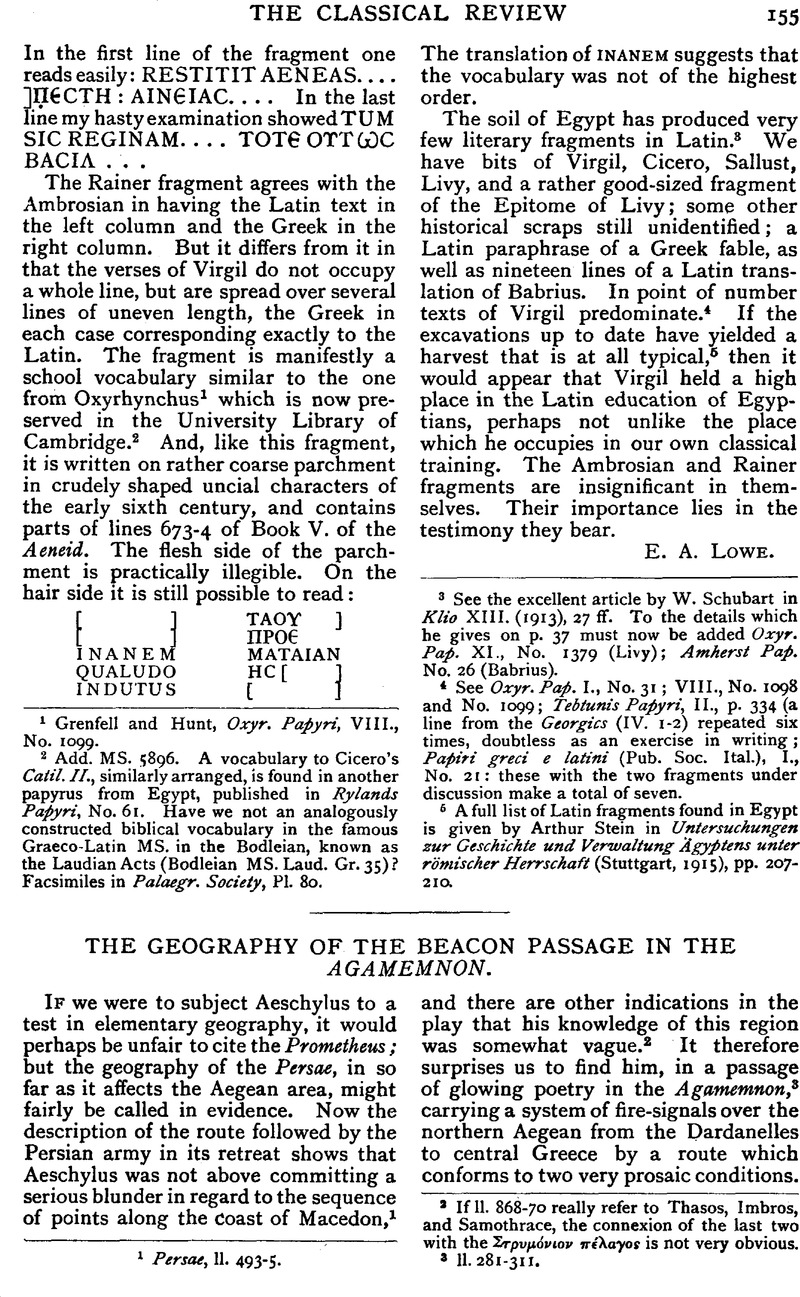Published online by Cambridge University Press: 27 October 2009

page 155 note 1 Persae, ll. 493–5.
page 155 note 2 If ll. 868–70 really refer to Thasos, Imbros, and Samothrace, the connexion of the last two with the ![]() is not very obvious.
is not very obvious.
page 155 note 3 ll. 281–311.
page 156 note 1 De Corona, § 87.
page 156 note 2 Herod. VII. 182, IX. 3; Thuc. II. 94, III. 22, 80; cf. Soph. Nauplius, frag. 5. For ‘jamming,’ Thuc. III. 22, § 8.
page 156 note 3 IX. 3.
page 156 note 4 Xenophon, Hell II. 1, 30. The ship was a pirate, and therefore fast. Xenophon evidently regarded the time as a record.
page 156 note 5 Ed. of Agamemnon, p. xx.
page 158 note 1 See Verrall ad loc.
page 158 note 2 In his translation of the Agamemnon.
page 158 note 3 The image of one and the same fire, ‘conducted along the beacon chain’ from Ida to the roof of the Atreidae, may be good poetry and (if we follow Mr. Cornford, Thucydides Mythistoricus, p. 149) even better ethics. But it is post-Aeschylean. The poet himself insists, in the plainest language, that what he is conducting from Ida to Argos is not fire, but light. See the text. ‘Allusive’ interpretation has been allowed wide scope of late; the least it can do in return is to play its entertaining game according to its own rules, or at the worst explain what the fire of retributive Justice has to do with the light (φάος of all things!), lineally descended from Idaean fire, and therefore presumably distinct from it, which brought a message to Argos.
As regards the suggestion ἰχθῦς, I am aware that even Mr. W. R. Paton (Class. Rev. XXXV., p. 107) agreed with Ahrens and Professor Murray; but he destroyed his case and theirs by (most appositely) comparing the use of lamps by poachers on salmon rivers in Scotland.
page 158 note 4 Class. Rev. XXXV., p. 287.
page 158 note 5 On this use of the aorist participle, see above all Platt, in Jour. Phil. LXIX., p. 128 ff.Google Scholar
page 159 note 1 With or without the change to σκοπαῖς in l. 289, which I prefer, and with reserves regarding ἡδονήν.
page 159 note 2 That Icus was scanned as a trochee is shown by the fragment of Callimachus in Ox. Pap. XI., No. 1362, ll. 8 and 24; but see note ad loc.
page 159 note 3 Frag. 391 (Dindorf), from Photius.
page 159 note 4 Or is πρὸς ἡδονήν a gloss on, or an attempt to restore metre to πρὸς χαράν, the residue by haplography of ![]() ?
?